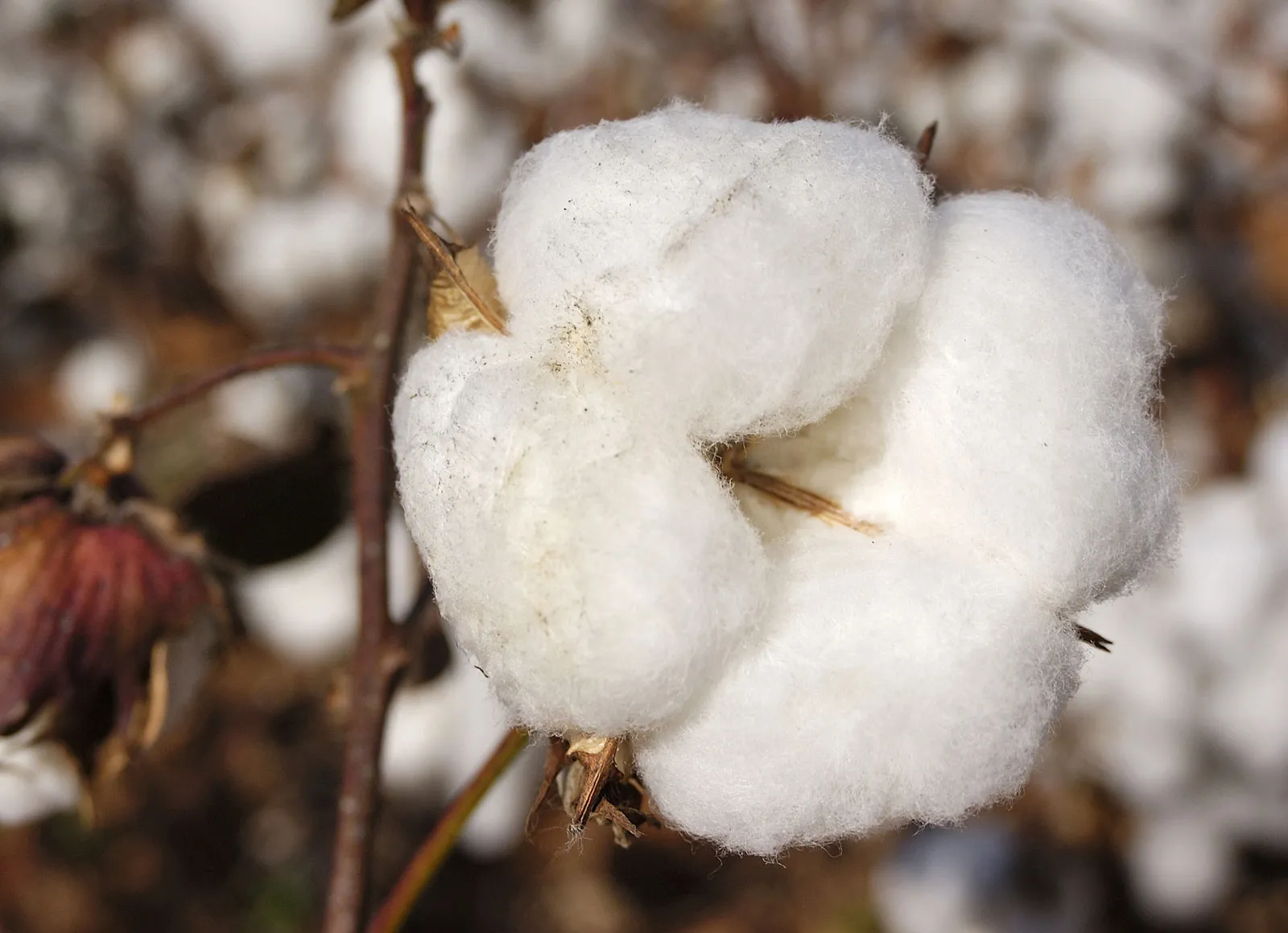
Gossypium, a fascinating plant commonly known as cotton, has intrigued researchers, historians, and nature enthusiasts for centuries. With its soft, fluffy fibers and abundance of uses, cotton has played a significant role in shaping the course of human history. From clothing to household items, Gossypium has provided us with countless benefits.
But there is more to this extraordinary plant than meets the eye. In this article, we will delve into 19 enigmatic facts about Gossypium that will leave you amazed and curious to learn more. From its ancient origins to its impact on the global economy, Gossypium has a rich and complex story that continues to unfold.
So, buckle up and prepare to embark on a journey through the intriguing world of Gossypium, as we unravel the mysteries and unveil the secrets of this remarkable plant.
Key Takeaways:
- Gossypium, also known as cotton, is a versatile and valuable plant that provides soft fibers, nutritious seeds, and beautiful flowers. It’s a key player in the textile industry and supports millions of jobs worldwide.
- Cotton, a renewable resource, has evolved with innovative farming practices and can be genetically modified. Its biodegradable fibers are not only versatile in textiles but also contribute to sustainability and environmental friendliness.
Gossypium is a key player in the textile industry.
Gossypium, commonly known as cotton, is one of the most widely cultivated and commercially important crops in the world. It is primarily grown for its soft, fluffy fibers, which are used to make various textile products.
There are over 50 species of Gossypium.
Gossypium is a diverse genus with over 50 known species. These species vary in terms of their growth habits, flower colors, and fiber qualities. However, the most commonly cultivated species are Gossypium hirsutum and Gossypium barbadense.
Gossypium plants produce beautiful flowers.
Before the cotton fibers develop, Gossypium plants produce attractive flowers that come in different shades of white, yellow, and pink. These flowers bloom for a short period and add a touch of beauty to the cotton fields.
Cotton seeds are a valuable byproduct.
Although cotton fibers are the primary focus, the seeds of Gossypium are also valuable. They are a rich source of oil and protein, which can be extracted and used in various industries such as food, cosmetics, and animal feed.
Gossypium fibers are incredibly versatile.
The fibers produced by Gossypium plants have excellent properties that make them incredibly versatile in the textile industry. They are soft, breathable, and have high tensile strength, making them suitable for a wide range of applications.
Cotton is an important cash crop in many countries.
Gossypium cultivation plays a significant role in the economies of several countries, including the United States, China, India, Pakistan, and Brazil. These countries export large quantities of cotton and contribute to the global textile trade.
Gossypium seeds have been harvested for thousands of years.
The cultivation of Gossypium dates back thousands of years. Archaeological evidence suggests that cotton was being grown and used for textile purposes as early as 5000 BCE in the Indus Valley Civilization.
Cotton is a thirsty crop.
Gossypium plants require a significant amount of water to grow. On average, it takes about 2,700 liters of water to produce a single cotton T-shirt. This has led to concerns over water scarcity and sustainable cotton farming practices.
Gossypium fibers have a natural waxy coating.
To protect the cotton fibers from moisture and pests, Gossypium plants produce a natural waxy coating called “oleoplasts.” This coating adds a slight sheen to the cotton and contributes to its durability.
Cotton is a renewable resource.
Gossypium is a renewable crop, as it can be grown and harvested annually. This makes it a sustainable choice for the textile industry compared to synthetic fibers, which are derived from non-renewable resources.
Gossypium flowers attract pollinators.
The vibrant flowers of Gossypium attract bees and other pollinators, which play a crucial role in the reproduction of the plants. This makes cotton fields not only visually appealing but also important for supporting biodiversity.
Gossypium plants can grow in various climates.
Gossypium is a hardy plant that can adapt to different climatic conditions. It is cultivated in tropical, subtropical, and temperate regions worldwide, making it a truly versatile crop.
Gossypium fibers are flame-resistant.
One of the remarkable properties of Gossypium fibers is their natural flame resistance. Unlike synthetic fibers, cotton fibers will not melt or stick to the skin when exposed to fire, making it a safer choice for clothing.
Gossypium plays a role in traditional medicine.
Various parts of the Gossypium plant are used in traditional medicine. For example, the seeds are believed to have medicinal properties and are used in the treatment of digestive disorders and inflammation.
Cotton farming has evolved with innovation.
Over the years, cotton farming practices have evolved with the introduction of innovative technologies. Modern methods such as precision farming, drip irrigation, and mechanized harvesting have improved efficiency and sustainability.
Gossypium fibers are biodegradable and compostable.
Unlike synthetic fibers, Gossypium fibers are biodegradable and can decompose naturally over time. This makes cotton a more environmentally friendly choice for clothing and reduces the accumulation of non-biodegradable waste.
Gossypium is a source of employment for millions.
The cultivation, harvesting, and processing of Gossypium provide employment opportunities for millions of people worldwide. It supports a large workforce, from farmers and laborers to textile workers and artisans.
Cotton can be genetically modified.
In recent decades, genetically modified (GM) varieties of Gossypium have been developed to enhance traits such as insect resistance and herbicide tolerance. GM cotton has significantly influenced global cotton production.
Gossypium fibers can be recycled.
Even after their primary use, Gossypium fibers can be recycled and repurposed. They can be transformed into new textile products or used in industries such as automotive padding, home insulation, and paper manufacturing.
These 19 enigmatic facts about Gossypium illustrate its importance, versatility, and impact on various aspects of our lives. From its role in the textile industry to its impact on the economy and the environment, Gossypium continues to be a fascinating and valuable plant.
Conclusion
Gossypium, commonly known as cotton, is a fascinating and enigmatic plant with a rich history and numerous surprising characteristics. From its ancient origins to its widespread cultivation, cotton has played a vital role in human civilization. Its versatility, durability, and softness have made it one of the most widely used and beloved textiles in the world.Throughout this article, we have uncovered 19 intriguing facts about Gossypium, shedding light on its genetic diversity, unique growth patterns, and ecological significance. We have explored its various species, adaptations to different environments, and importance in global trade. Learning about these lesser-known aspects of cotton gives us a deeper appreciation for this remarkable plant and its impact on our society.Whether it’s the migration of cotton bollworm moths, the development of genetically modified cotton, or the cottonseed oil used in cooking, each fact about Gossypium reveals a small piece of its intricate puzzle. The more we delve into the world of cotton, the more we realize its complexity and the critical role it continues to play in various industries.In conclusion, Gossypium is a captivating and multifaceted plant that deserves our attention and admiration. Its enduring presence in our lives, from clothing and textiles to food production and economic stability, exemplifies its unparalleled importance. As we continue to embrace the wonders of Gossypium, let us remember the journey and stories hidden within each cotton fiber.
FAQs
1. What are the different species of Gossypium?
There are approximately 50 different species of Gossypium, but the most widely cultivated ones include Gossypium hirsutum (upland cotton), Gossypium barbadense (Egyptian or Pima cotton), and Gossypium arboreum (tree cotton).2. How long does it take for cotton plants to mature?
The time it takes for cotton plants to mature depends on the variety and growing conditions. On average, it takes around 150 to 180 days from planting to harvest.3. Is cotton a sustainable crop?
Cotton can be both sustainable and non-sustainable, depending on how it is grown. Sustainable cotton farming practices focus on reducing water consumption, minimizing pesticide usage, and promoting fair labor conditions.4. Can cotton be grown in different climates?
Yes, different varieties of cotton are adapted to various climates around the world. While upland cotton is suitable for temperate climates, Pima cotton thrives in warmer climates.5. Is genetically modified cotton common?
Yes, genetically modified cotton, also known as Bt cotton, is widely grown across many cotton-producing countries. Bt cotton has been genetically engineered to produce a toxin that kills certain pests, reducing the need for chemical pesticides.6. What are the main uses of cotton?
Cotton is primarily used in textile production for making clothing, beddings, and other fabrics. Additionally, cottonseed oil is extracted and used in cooking, and cottonseed meal is used as animal feed.
Gossypium's fascinating history and versatile uses make it a true wonder of the botanical world. From its role in the textile industry to its unique characteristics, cotton plants never cease to amaze. If you're curious about other intriguing aspects of the plant kingdom, explore the mysteries of plant genetics and how they shape our world. For a closer look at the agricultural landscape, dive into Alabama's agriculture and discover the state's rich farming heritage. And if you're interested in the journey from cotton to cloth, don't miss the captivating story of Panipat's textile market in Haryana, India.
Was this page helpful?
Our commitment to delivering trustworthy and engaging content is at the heart of what we do. Each fact on our site is contributed by real users like you, bringing a wealth of diverse insights and information. To ensure the highest standards of accuracy and reliability, our dedicated editors meticulously review each submission. This process guarantees that the facts we share are not only fascinating but also credible. Trust in our commitment to quality and authenticity as you explore and learn with us.


